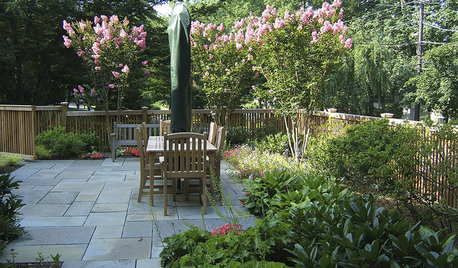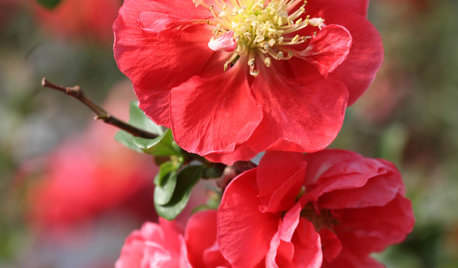Crepe Myrtle- bad aphids, I pruned in summer
angiepangie
10 years ago
Related Stories

GARDENING GUIDESHow to Prune Your Flowering Shrubs for the Best Blooms
Less is often more when it comes to properly pruning flowering shrubs. Here’s what to do and why
Full Story
GARDENING GUIDESGreat Design Plant: Crape Myrtle
With long-lasting blooms and gorgeous exfoliating bark, this ornamental tree brings bright color and a unique form to the landscape
Full Story
LANDSCAPE DESIGN7 Great Trees for Summer Shade and Fall Color
These landscape-pro faves straddle the seasons beautifully. Could one enhance your own yard?
Full Story
GARDENING GUIDESTop 12 Summer-Blooming Perennials for Deer-Resistant Drama
Can you have garden color, fragrance and exciting foliage with hungry deer afoot? These beauties say yes
Full Story
SUMMER GARDENINGHouzz Call: Please Show Us Your Summer Garden!
Share pictures of your home and yard this summer — we’d love to feature them in an upcoming story
Full Story
GARDENING GUIDESAttract Hummingbirds and Bees With These Beautiful Summer Flowers
Roll out a welcome mat for pollinators to keep your landscape in balance and thriving
Full Story
GARDENING GUIDESHow I Learned to Be an Imperfect Gardener
Letting go can lead to a deeper level of gardening and a richer relationship with the landscape. Here's how one nature lover did it
Full Story
WINTER GARDENINGCalifornia Gardener's January Checklist
Winter-defying blooms and pruning saws earn a cheer, while California-focused gardening design books get a well-deserved shout-out
Full Story
EDIBLE GARDENSHow to Grow Your Own Peaches and Nectarines
Make gardening a little sweeter with these juicy fruits, which you can eat after plucking or preserve for later
Full Story
GROUND COVERSGround Force: 10 Top Ground Covers for Your Garden
Protect your soil from weeds and drought this summer with a living mulch of ground covers
Full Story





Erod1
angiepangieOriginal Author
Related Professionals
Simpsonville Landscape Architects & Landscape Designers · Fitchburg Landscape Architects & Landscape Designers · East Patchogue Landscape Architects & Landscape Designers · Davis Landscape Contractors · Harvey Landscape Contractors · Huntington Landscape Contractors · Live Oak Landscape Contractors · Methuen Landscape Contractors · Monterey Landscape Contractors · Setauket-East Setauket Landscape Contractors · Severna Park Landscape Contractors · Winchester Landscape Contractors · Forest Hill Landscape Contractors · Batavia Decks, Patios & Outdoor Enclosures · Fort Mill Decks, Patios & Outdoor EnclosuresErod1
MiaOKC
Okiedawn OK Zone 7
Erod1
angiepangieOriginal Author
Erod1
sammy zone 7 Tulsa
shankins123
Okiedawn OK Zone 7
shankins123